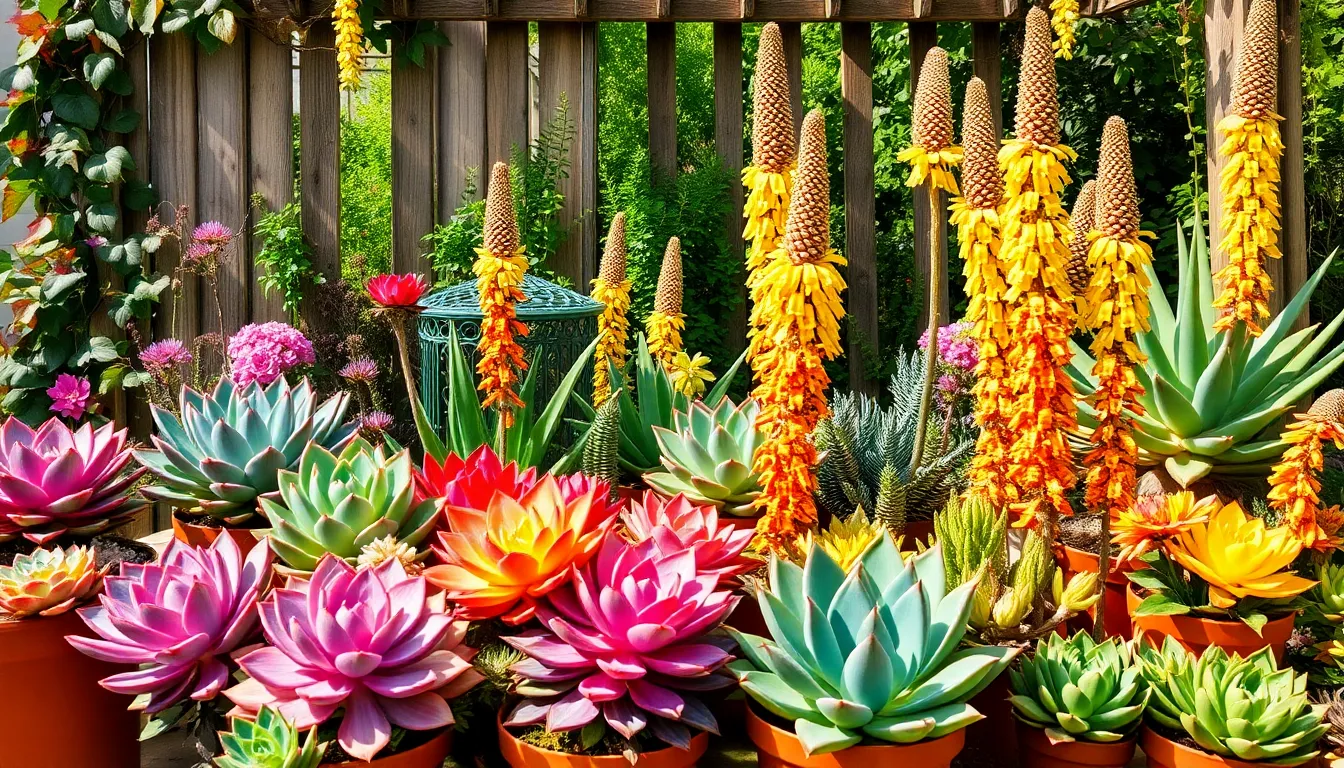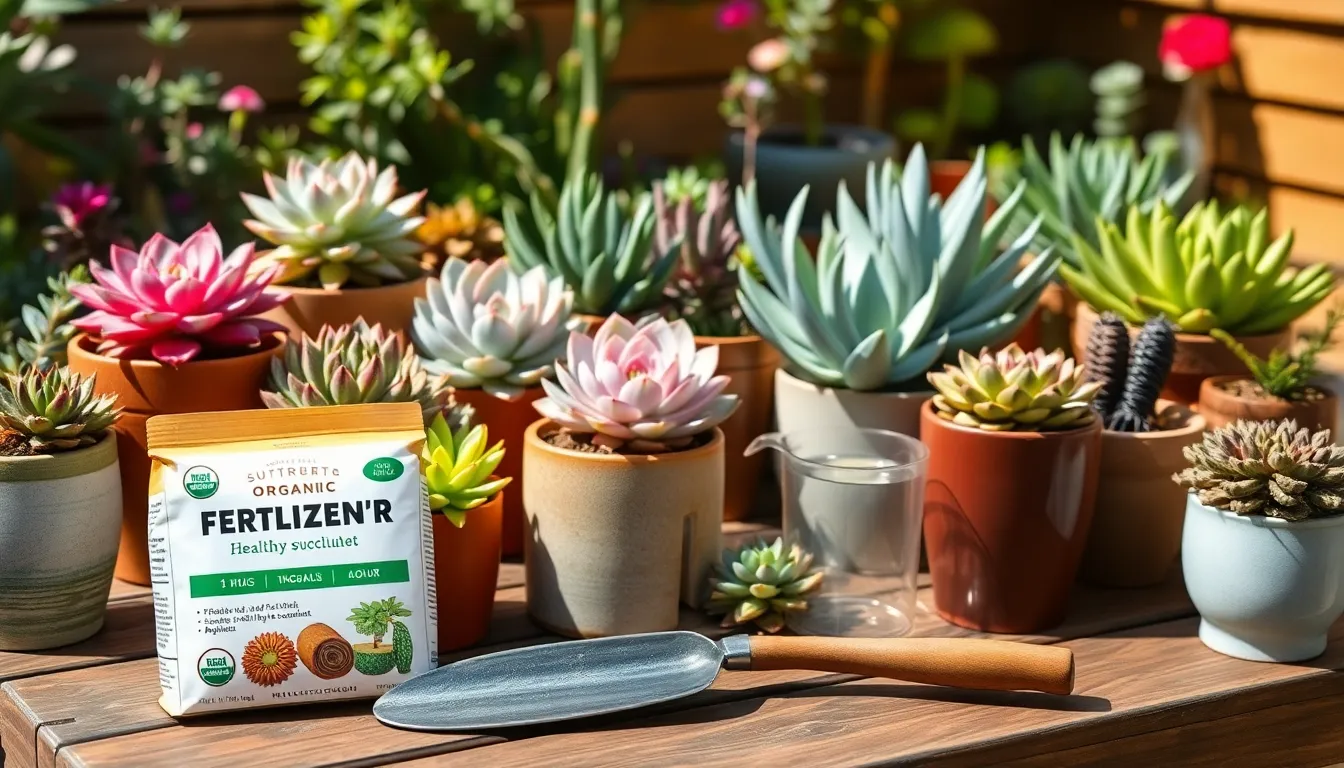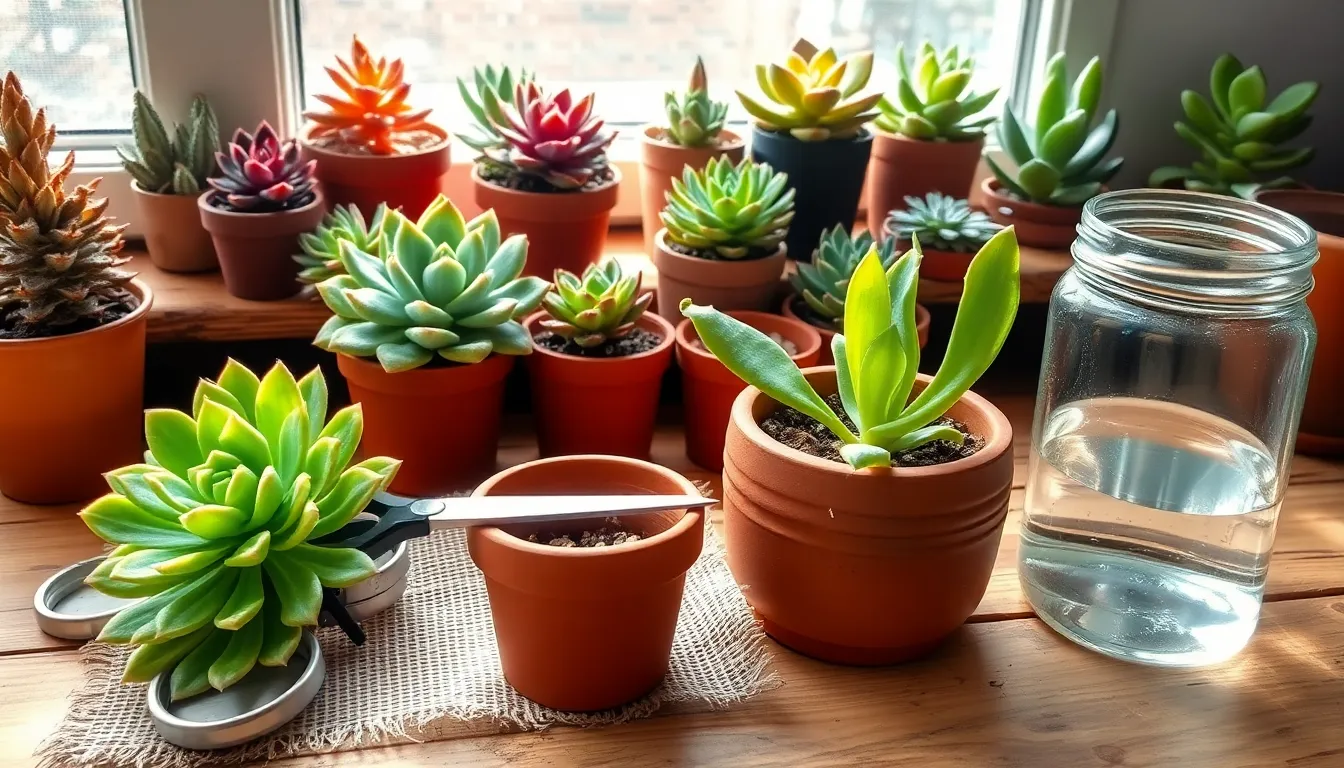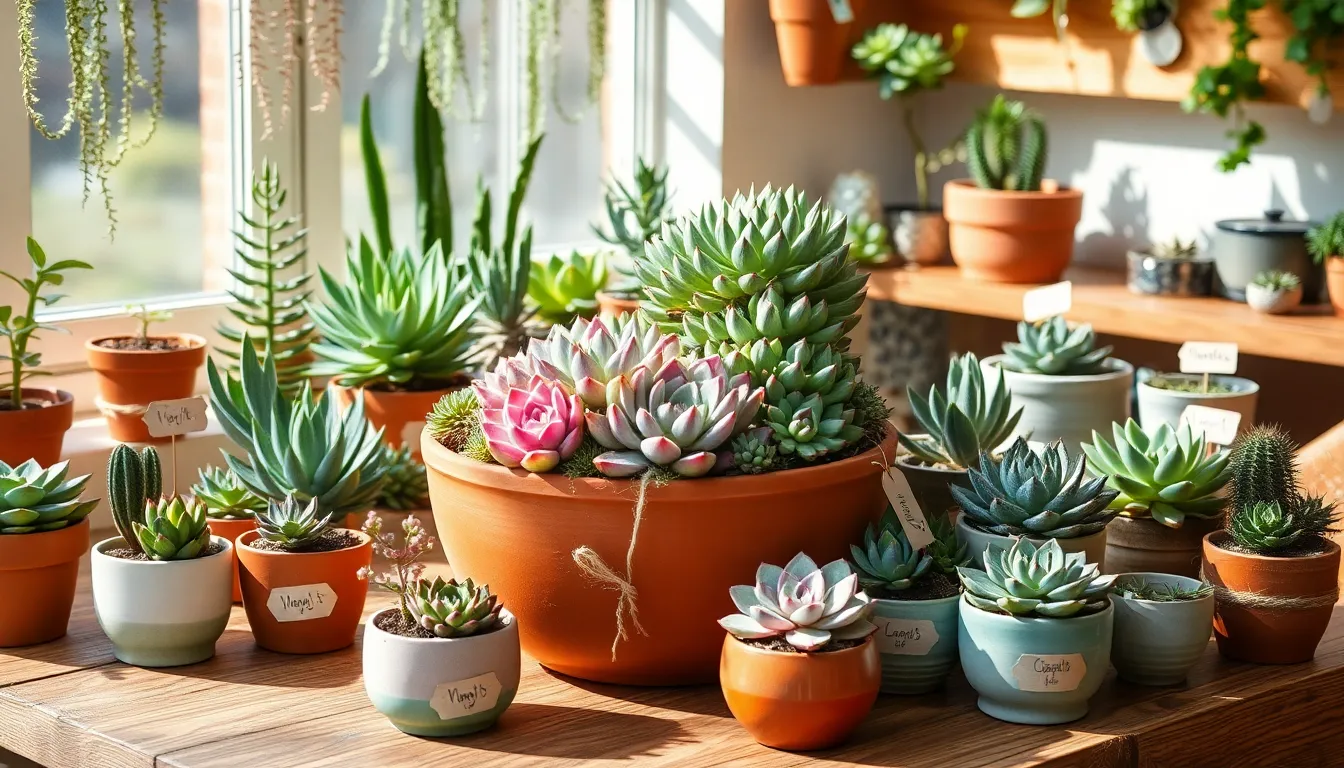Welcome to a world where beauty and functionality intertwine effortlessly—the enchanting realm of succulents that double as pollinator magnets! Whether you’re just beginning your gardening journey or are a seasoned horticulturist, this guide is your ticket to transforming any garden space into a vibrant, buzzing haven. Imagine the joy of watching bees, butterflies, and hummingbirds dance among your carefully chosen succulents, each plant a beacon of life and energy.
Not only do these hardy plants thrive in various conditions, but they also play a crucial role in supporting your local ecosystem. By exploring our top 10 list, you’ll gain valuable insights into selecting and nurturing succulents that attract pollinators, thereby enhancing both your garden’s beauty and its environmental impact. Dive into this guide with confidence, knowing that each plant is a step toward a more sustainable, lively, and fulfilling gardening experience.
Sedum ‘Autumn Joy’ (Hylotelephium spectabile)
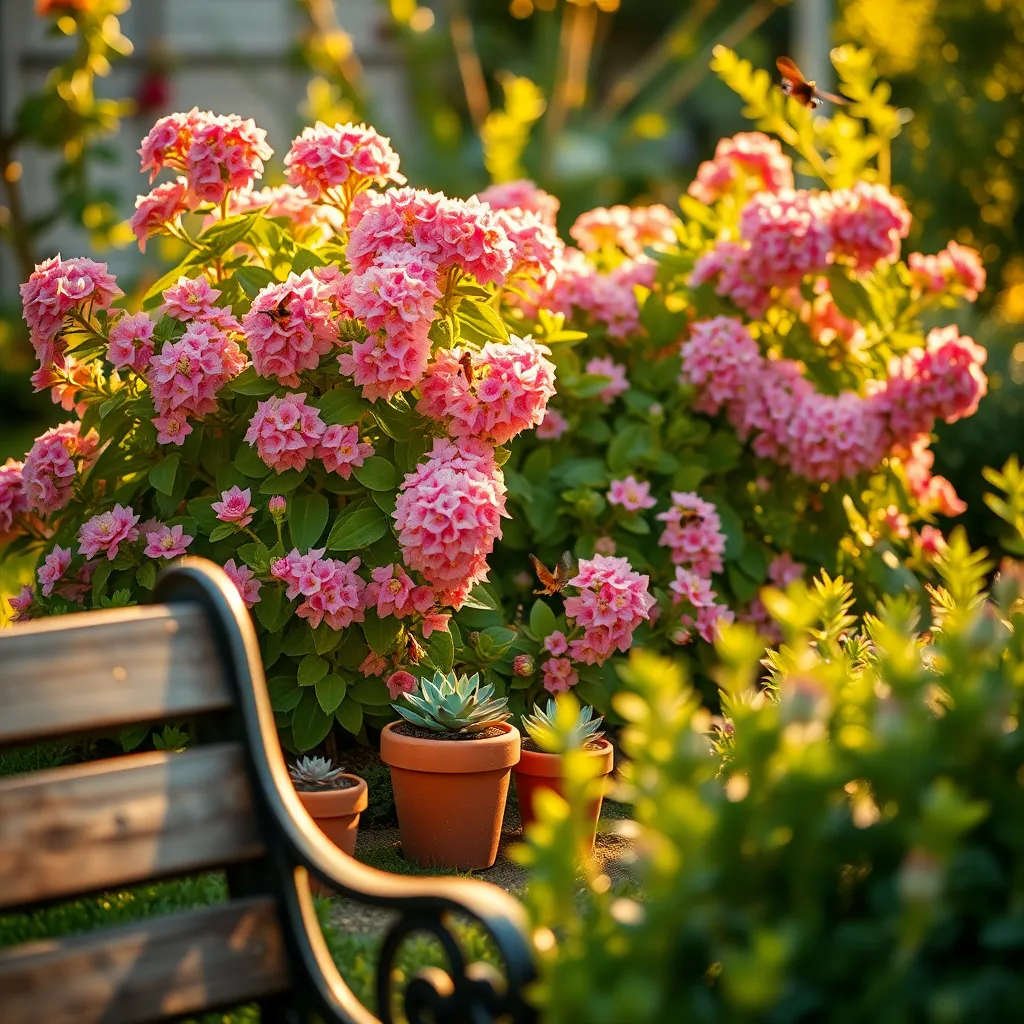
Sedum ‘Autumn Joy’ (Hylotelephium spectabile) is a versatile succulent known for its ability to attract a variety of pollinators, especially bees and butterflies. This hardy perennial thrives in USDA zones 3 to 9, making it suitable for a wide range of climates.
Planting Sedum ‘Autumn Joy’ is straightforward—simply ensure it is placed in an area with full sun. Though it tolerates poor soil, it thrives in well-drained, sandy or gravelly soil to prevent root rot.
Watering needs for this sedum are minimal once established, as it is drought-tolerant. However, during the first growing season, keep the soil slightly moist to help the plant develop a robust root system.
For those looking to maintain plant health and maximize blooms, remove spent flowers in late fall to prevent self-seeding. Additionally, dividing the plant every few years will encourage vigorous growth and more abundant flowering.
Aloe Vera (Aloe barbadensis miller)

Aloe Vera, known scientifically as Aloe barbadensis miller, is a versatile succulent that not only adds beauty to your garden but also attracts beneficial pollinators. Its tubular yellow flowers are particularly appealing to bees and hummingbirds, providing a vital source of nectar.
When cultivating Aloe Vera, it’s essential to plant it in well-draining soil, such as a cactus mix, to prevent root rot. Position your Aloe Vera in a spot that receives plenty of sunlight, ideally six to eight hours a day, to ensure robust growth and flowering.
Water Aloe Vera sparingly, following the “soak and dry” method, where you allow the soil to dry out completely between waterings. This succulent prefers a low-humidity environment, so it thrives in arid conditions, making it perfect for xeriscaping.
For those looking to propagate Aloe Vera, it’s easy to do so by removing offsets or “pups” from the base of the plant. Simply let the cut ends dry for a day or two and then plant them in a new pot with fresh, well-draining soil.
Kalanchoe ‘Flapjacks’ (Kalanchoe luciae)
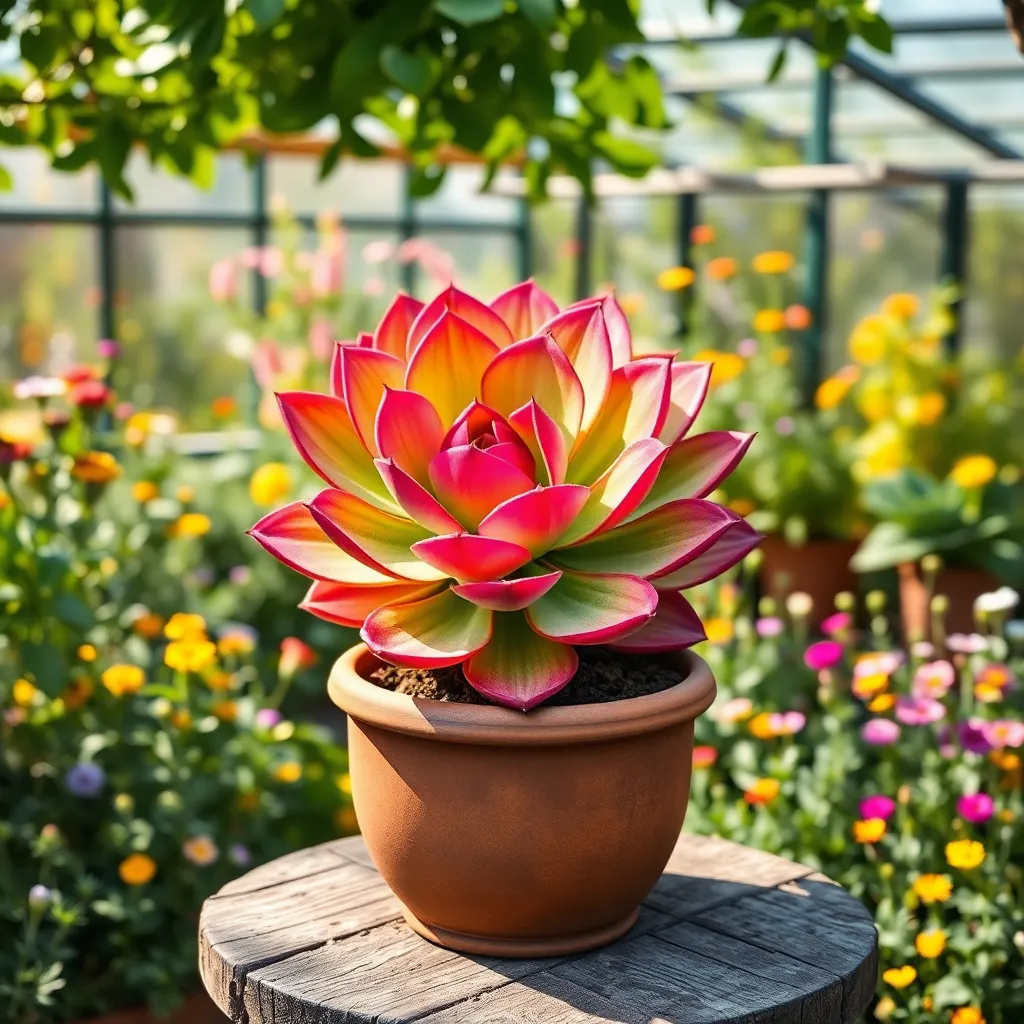
Kalanchoe ‘Flapjacks’ (Kalanchoe luciae) is a striking succulent known for its paddle-shaped leaves that turn a vibrant red in full sun. This plant is a fantastic choice for attracting pollinators like bees, thanks to its tall flower spikes that bloom in late winter to early spring.
To grow Kalanchoe ‘Flapjacks’ successfully, plant it in a well-draining soil mix, ideally one specifically designed for succulents. Avoid overwatering by allowing the soil to dry out completely between waterings, which typically means watering every two to three weeks.
Place your Kalanchoe in a location where it will receive plenty of sunlight, as full sun enhances its colorful foliage and promotes healthy growth. If growing indoors, a south-facing window is ideal, but ensure to rotate the plant occasionally for even light exposure.
For gardeners in cooler climates, it’s important to bring Kalanchoe ‘Flapjacks’ indoors before the first frost, as it is not frost-tolerant. Advanced tip: Propagate new plants by gently removing offsets from the base and allowing them to callous over before planting in fresh soil.
Echeveria ‘Lola’ (Echeveria derenbergii)
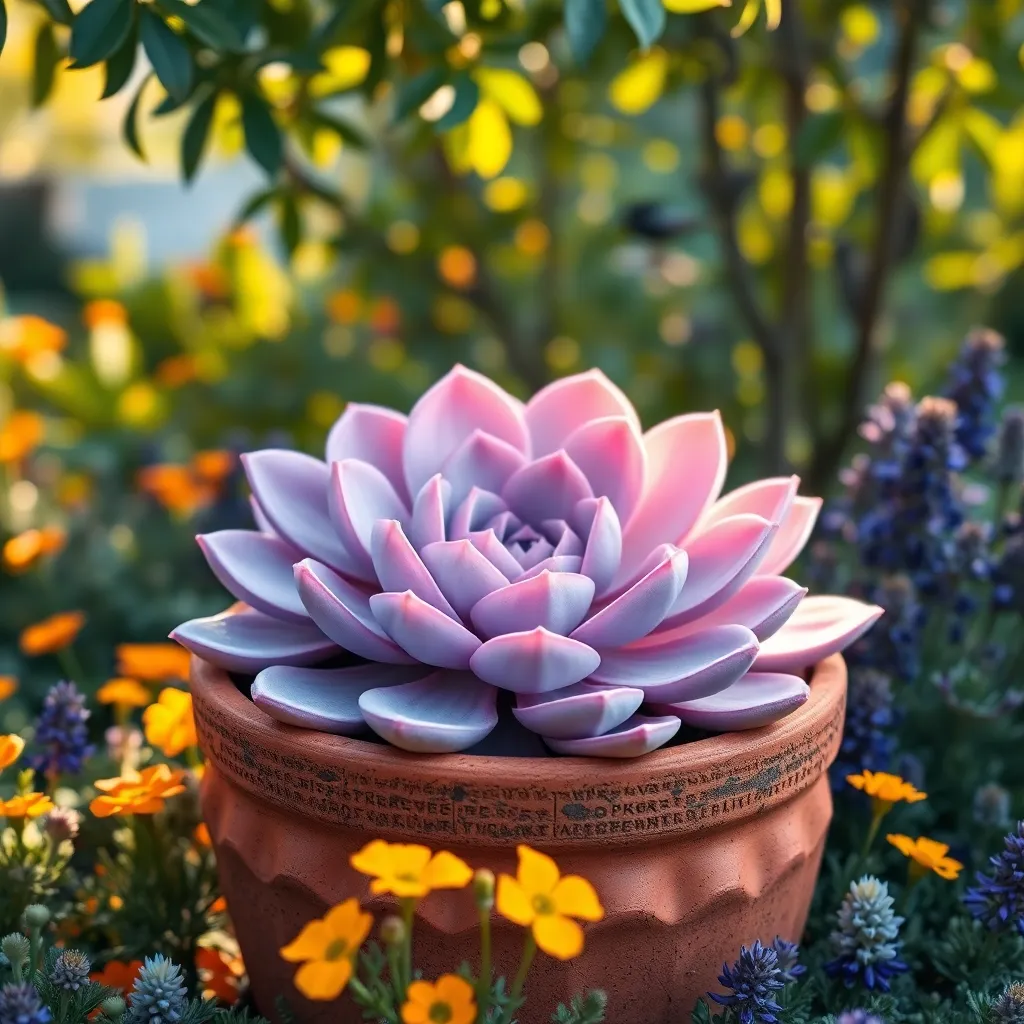
Echeveria ‘Lola’ is a stunning succulent known for its pastel rosette leaves, which can be a magnet for pollinators. This plant thrives in well-drained soil, making a cactus or succulent mix an ideal choice for optimal growth.
To ensure your Echeveria ‘Lola’ remains healthy, place it in a location where it receives at least six hours of bright, indirect sunlight daily. If growing indoors, a south-facing window can provide the necessary light intensity to maintain its vibrant colors.
Watering should be done sparingly, allowing the soil to dry out completely between waterings to prevent root rot. During the growing season, typically spring and summer, you can water every 1-2 weeks, but reduce frequency significantly in the dormant winter months.
For those looking to propagate, Echeveria ‘Lola’ can be easily propagated from leaf cuttings. Simply pluck a healthy leaf, let it dry for a few days to callous, then place it on top of moist soil and wait for roots to develop.
Panda Plant (Kalanchoe tomentosa)
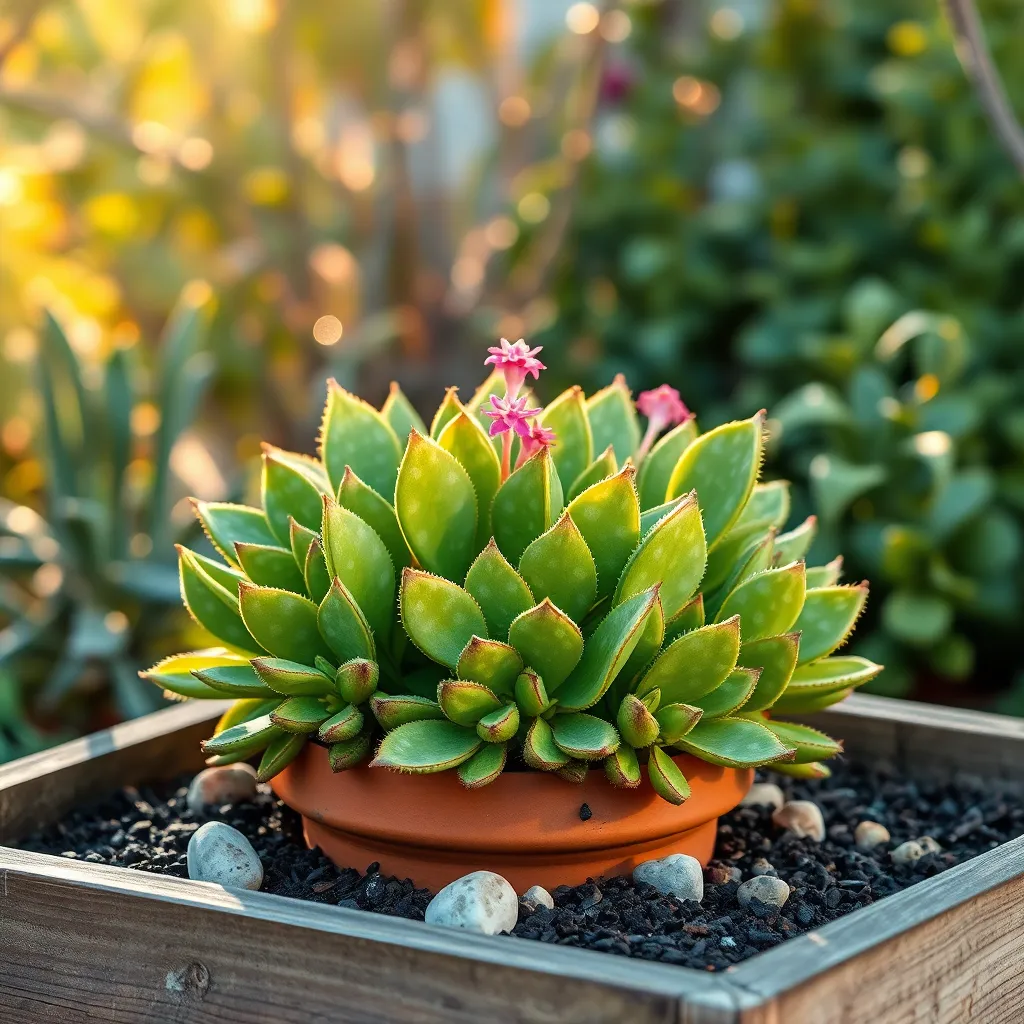
The Panda Plant (Kalanchoe tomentosa) is a charming succulent known for its soft, velvety leaves that resemble the ears of a panda, complete with brownish-red edges. Despite its cute appearance, this plant is an excellent choice for attracting pollinators due to its occasional, subtle blooms.
For optimal growth, place your Panda Plant in a location where it receives bright, indirect sunlight. Direct sunlight can cause the leaves to scorch, so if you notice any discoloration, consider moving it to a more shaded spot.
Watering should be done sparingly, allowing the soil to dry out completely between waterings, as the plant is highly drought-tolerant. Overwatering is a common mistake with succulents, so ensure your pot has good drainage to prevent root rot.
When it comes to soil, a well-draining mix is crucial; consider using a cactus or succulent soil blend. Adding perlite or sand can further improve drainage, which is vital for the health of your Panda Plant.
Advanced gardeners might enjoy propagating the Panda Plant through leaf cuttings, a rewarding process that is relatively simple. Simply remove a healthy leaf, let it callous over for a day or two, and place it on top of moist soil to encourage rooting.
String of Pearls (Senecio rowleyanus)
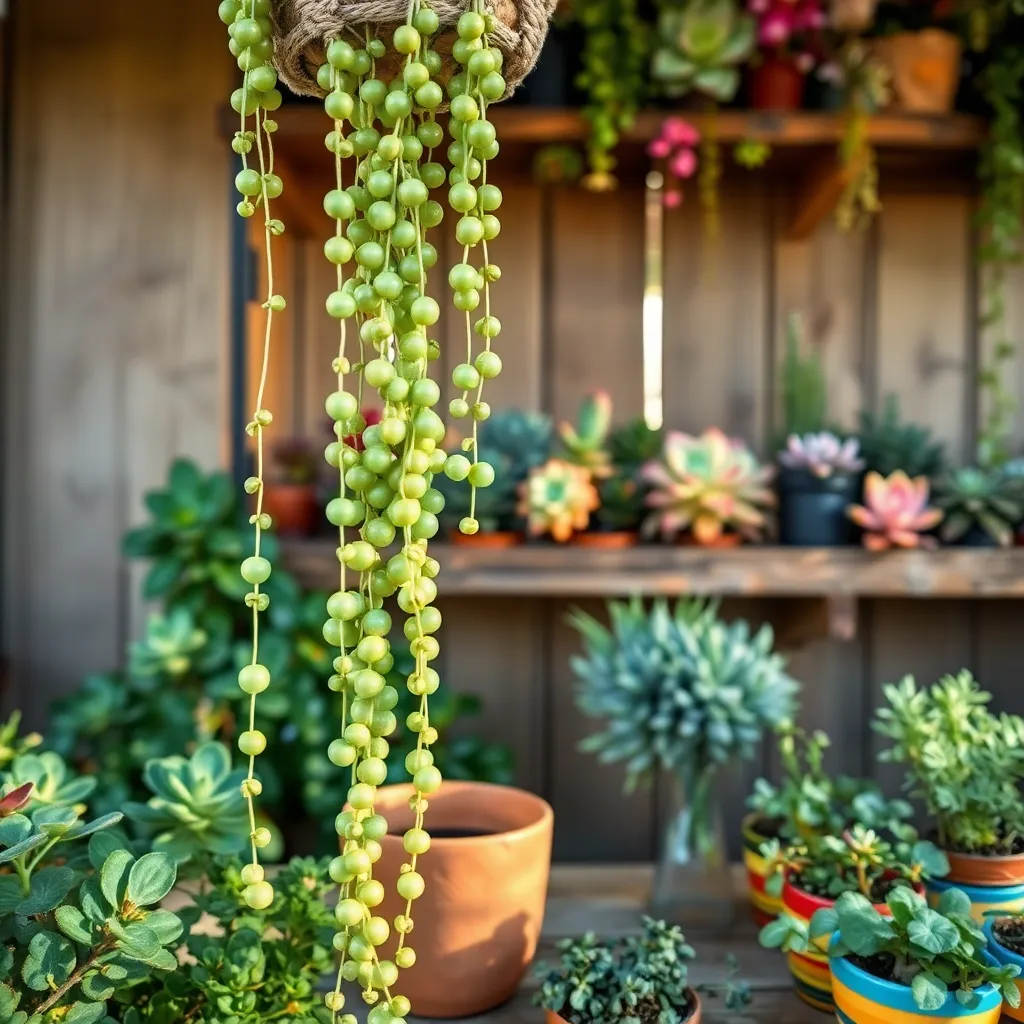
String of Pearls (Senecio rowleyanus) is a unique succulent that can add a touch of whimsy to your garden while attracting pollinators. This plant is known for its cascading strands of fleshy, pea-shaped leaves that resemble strings of pearls, making it a visually appealing choice for hanging baskets or elevated planters.
To thrive, String of Pearls requires bright, indirect light, which helps it maintain its vibrant green color. If placed in a spot with too much direct sunlight, its delicate leaves may scorch, so aim for a location where it receives morning sun and afternoon shade.
When it comes to soil, this succulent prefers a well-draining mix to prevent root rot, which can be fatal. You can create an ideal medium by mixing standard potting soil with coarse sand or perlite to enhance drainage.
Watering should be infrequent but thorough, allowing the soil to dry out completely between waterings. During the growing season—spring and summer—aim to water once every two weeks, reducing the frequency in the colder months.
For those looking to propagate their String of Pearls, it’s as simple as snipping a healthy strand and laying it on the soil surface. Ensure that the nodes are in contact with the soil, as this is where new roots will develop, helping you expand your succulent collection quickly.
Ghost Plant (Graptopetalum paraguayense)
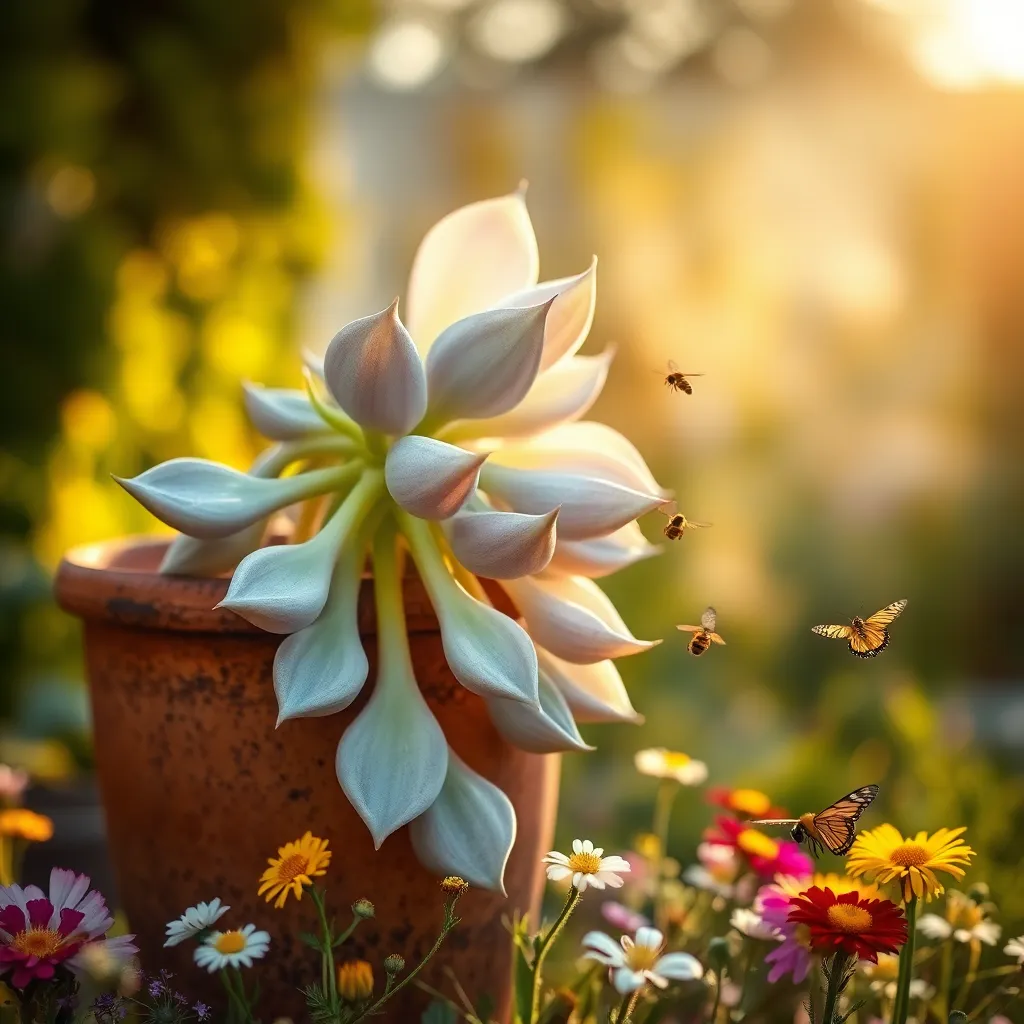
Ghost Plant (Graptopetalum paraguayense) is a stunning succulent that not only adds a touch of elegance to gardens but also attracts pollinators with its star-shaped flowers. This plant thrives in well-drained soil, making a cactus mix with added perlite an ideal choice to ensure optimal growth.
For beginners, it’s important to note that Ghost Plants prefer bright, indirect sunlight to maintain their vibrant colors. If you’re an experienced gardener, consider placing your Ghost Plant outdoors during the summer months to encourage more prolific flowering.
Watering should be done sparingly, allowing the soil to dry completely between waterings to prevent root rot, which is a common issue with succulents. When it comes to feeding, a dilute, balanced fertilizer applied once during the growing season can promote healthy growth without overwhelming the plant.
To propagate, remove a leaf and let it dry for a day or two before placing it on top of the soil, where it will eventually root and sprout new growth. This easy propagation method allows you to expand your collection or share with fellow gardening enthusiasts.
Blue Chalk Sticks (Senecio serpens)
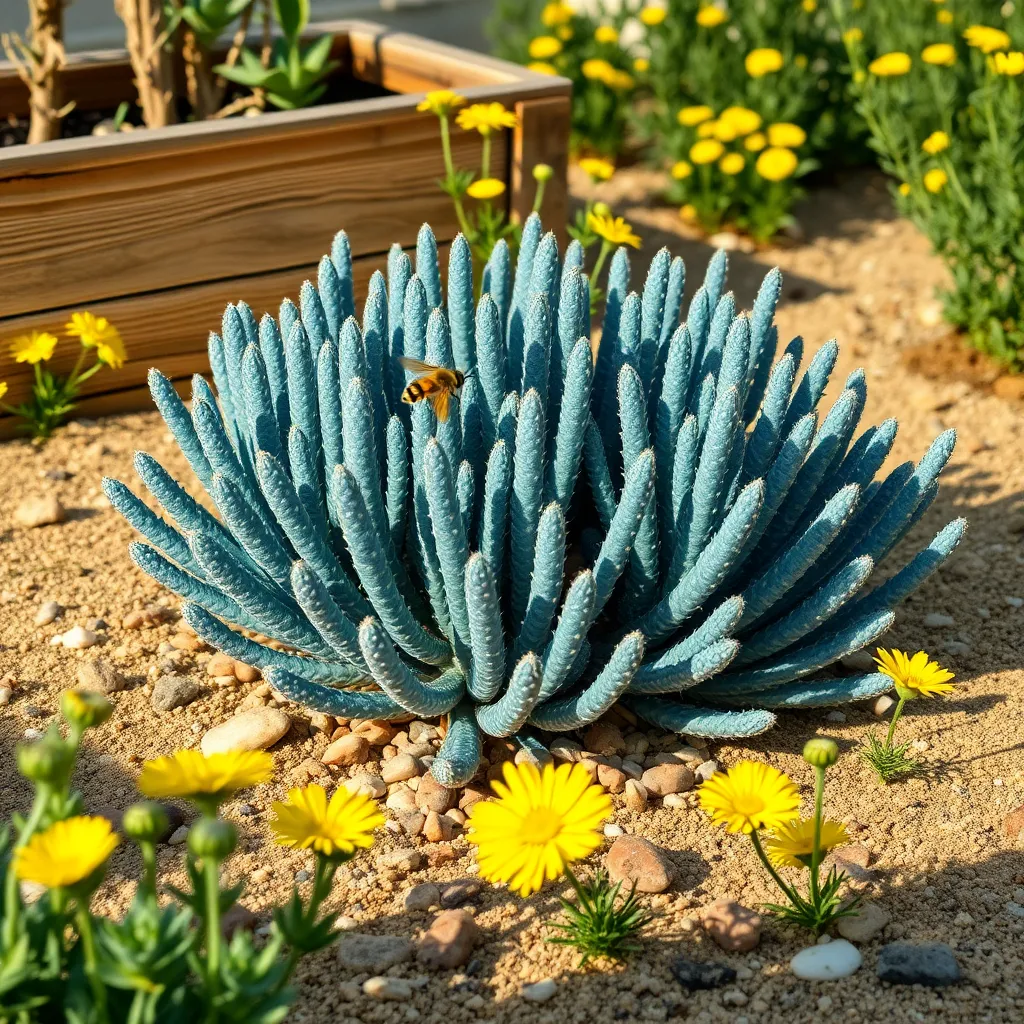
Blue Chalk Sticks, known scientifically as Senecio serpens, is a stunning succulent that is sure to attract pollinators with its unique blue-gray foliage. The plant thrives in well-draining soil, making a sandy cactus mix or a well-draining potting soil ideal for its growth.
It’s crucial to provide Blue Chalk Sticks with plenty of sunlight, as they flourish in full sun conditions. Aim to water this succulent sparingly; allowing the soil to dry completely between waterings will help prevent root rot, a common issue with overwatering.
When planting Blue Chalk Sticks, consider using a shallow container to prevent over-saturation of the roots. For gardeners interested in propagation, simply take cuttings and allow them to dry for a day before planting in soil, ensuring they root effectively.
For those in cooler climates, bringing Blue Chalk Sticks indoors during the winter months can help them survive frost. Regularly check for signs of pests like mealybugs, and use an insecticidal soap if needed to keep your plant healthy and thriving.
Ice Plant (Delosperma cooperi)
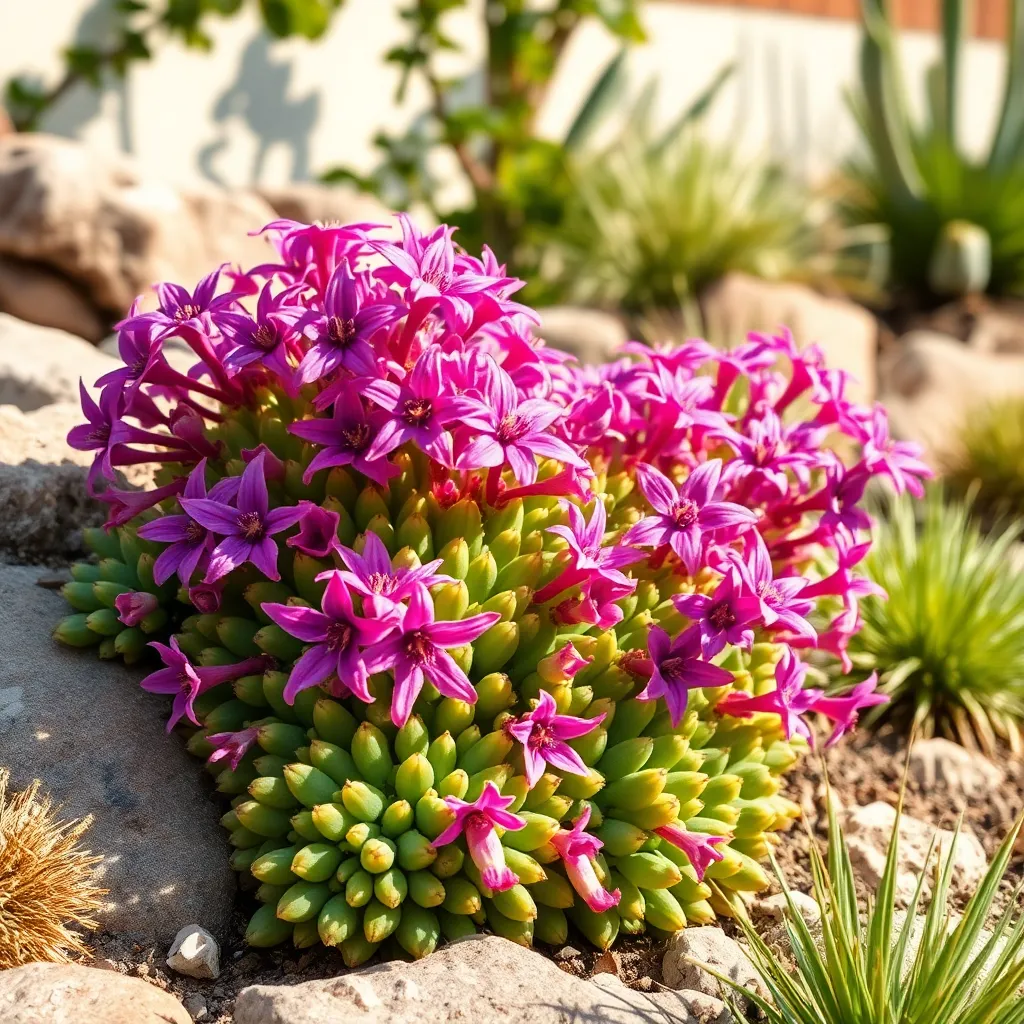
Ice Plant (Delosperma cooperi) is a vibrant succulent known for its dazzling, daisy-like flowers that attract a range of pollinators, including bees and butterflies. This hardy plant is perfect for gardeners looking to add a splash of color to rock gardens or sunny borders, thriving in well-draining soil and full sun exposure.
When planting Ice Plant, it’s crucial to ensure the soil has excellent drainage to prevent root rot, a common issue with succulents. Consider mixing coarse sand or perlite into your garden soil to enhance drainage, particularly if your garden soil tends to be heavy or clay-based.
Watering should be done sparingly, as overwatering can lead to problems. A deep watering once every few weeks is typically sufficient, especially during dry spells, but always allow the soil to dry out completely between waterings to keep the roots healthy.
Ice Plant is not only easy to care for but also spreads quickly, making it an ideal ground cover. For gardeners looking to propagate, simply take a cutting and let it dry for a day before planting it in a well-draining potting mix, ensuring it receives plenty of sunlight.
Fairy Washboard (Haworthiopsis limifolia)
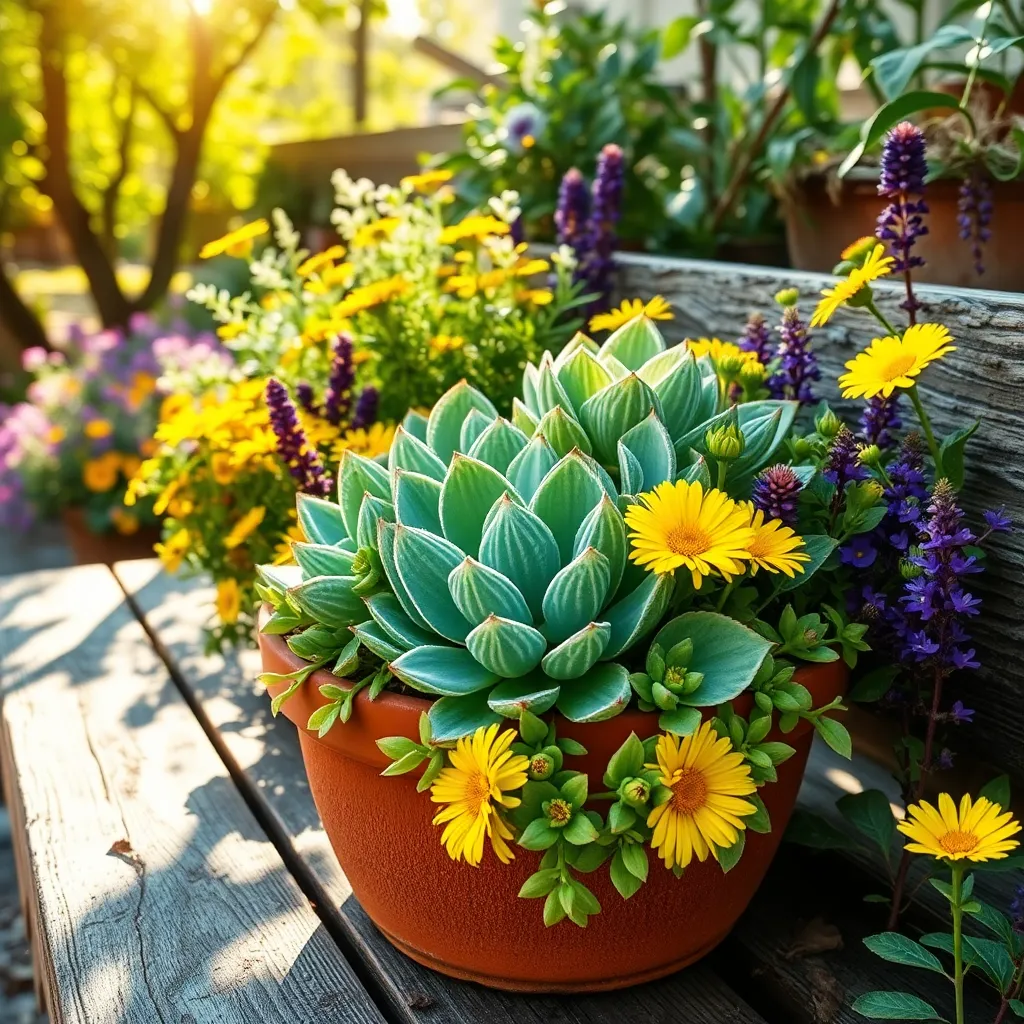
The Fairy Washboard, scientifically known as Haworthiopsis limifolia, is a delightful succulent that’s not only attractive but also an excellent choice for attracting pollinators. Its unique ridged leaves and rosette shape make it a visually appealing addition to any gardener’s collection.
To thrive, this succulent prefers well-draining soil, such as a cactus mix, which helps prevent root rot. Place the plant in a location where it receives bright, indirect sunlight for several hours a day, ensuring it maintains its vibrant appearance.
Watering should be done sparingly, allowing the soil to dry out completely between sessions, typically every two to three weeks depending on humidity levels. During the growing season, consider using a diluted, balanced fertilizer once a month to boost growth and vitality.
For gardeners looking to expand their collection, propagation is easily achieved through offsets that can be gently removed and potted separately. This not only helps in maintaining the plant’s shape but also encourages new growth, which is especially beneficial in attracting more pollinators to your garden.
Conclusion: Growing Success with These Plants
In exploring the “Top 10 Succulents That Attract Pollinators,” we’ve delved into nature’s beautiful metaphor for nurturing relationships—where patience, care, and the right environment foster growth and connection. The key concepts you’ve uncovered include the importance of creating a welcoming atmosphere, understanding the needs of your partner, and embracing diversity to enrich your bond. Each succulent symbolizes a unique aspect of relationship building, from resilience and adaptability to communication and mutual support.
As your next actionable step, consider selecting one of these succulents to cultivate at home as a daily reminder of the nurturing qualities essential in relationships. Let it inspire you to create a haven where love can flourish.
Remember, relationships, like gardens, require ongoing attention and care. Bookmark this article now, so you can revisit these valuable insights whenever you need a gentle nudge toward fostering deeper connections.
Looking ahead, with commitment and mindful action, your relationships can thrive, blossoming into rich, fulfilling partnerships. Empower yourself to take this journey today, and watch as the seeds of understanding and love grow into a vibrant, enduring bond.

